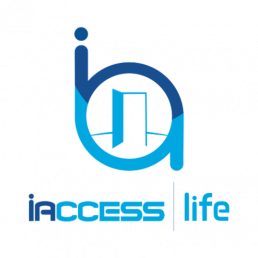Disability Etiquette: Respecting People with Disabilities
What is Disability Etiquette?
Disability etiquette can be defined as essential guidelines that tell us how to interact with people who have disabilities. The term “disability etiquette” is believed to have gained popularity in the 1970s when the Disability Rights Movements came into existence. In other words, Disability etiquette is a well-mannered and courteous way of interacting and relating with people living with disabilities. However, you must bear in mind that people living with disabilities are ultimately just that, people, and should be treated with the same respect as every other person.
With respect to disability etiquette, there are basic do’s and don’ts to be observed when engaging someone with a disability. In any situation, there are various ways to acknowledge and respect the individuality of people who have disabilities. Some of them include:
1. Communicate directly with them and not their caregiver. Talking to their caregivers about them like they’re not present is rude and will most likely hurt their feelings. Even if what you’re talking about will be addressed by their caregiver, make an effort to acknowledge their presence and carry them along.
2. Refrain from using obsolete terms like “disabled” or “handicapped,” “dumb,” “lame,” “retarded” “cripple” altogether. These terms describe individuals by their disabilities with no regard for their individuality and person. Hence, they are considered derogatory. Below you can learn more about the concepts “person first” or “people first” language and “identity first” language.
3. Recognize their ability to make decisions on their own and respect their choices. It would be insulting to assume that people with disabilities can’t make decisions independently and deprive them of their right to choose.
4. Refrain from judging their abilities based on their appearance. People with similar disabilities might be affected differently. This is why you need to offer your help and wait for their response before giving it. Don’t just assume that they need you to get the door for them, as this would deeply hurt their feelings and belittle whatever efforts they’ve put into being independent and able to take care of themselves.
5. Do not describe them with their disabilities. If there’s any need to make a description about them, first acknowledge their person. Instead of saying “he is paralytic,” say “he has paralysis” People are not defined by what they can do or cannot do. Having disabilities isn’t all there is to people living with disabilities. They have personalities, preferences, wants, and goals like everyone else. Disregarding all of these and defining them by their disabilities would be insensitive and hurtful.
6. Avoid asking questions about people’s disabilities. It is considered intrusive and insensitive. If the individuals themselves raise the subject, respond empathetically and not sympathetically. A lot of people with disabilities have put effort into accepting themselves for who they are. Hence sympathy might be met by them with hostility or indifference.
7. Instead of pretending to understand the point they’re trying to make when you don’t, ask questions. Ask questions and genuinely listen. Please don’t make them feel like you’re doing them a favor by listening to them. Ask, listen and repeat what you deduced from what they have said to be sure. Don’t project behaviors that will make them feel like you’re dealing with a child. An adult with a disability is not different from an adult without a disability. They are both adults.
8. Disability Etiquette supports offering to shake hands with people with disabilities after an introduction. It’s also not considered disrespectful to shake hands with your left hand.
9. Don’t act all serious around them in a bid to not offend them. Finding common ground is an excellent way to get yourself to relax around them. Most times, the energy you give is what you get back, so when you act uptight, you’re most likely going to get that uptight reaction from them too. A smile would be friendly. A nice smile. A nice compliment. The goal is not to flatter them; it helps you relax and help them feel comfortable with you.
10. Telling people with disabilities about the other people you know with the same disability is highly unnecessary, especially if you don’t know them well. Stereotyping and generalizing are insensitive to do with your words and with your actions. Every individual is unique, and people with disabilities are not less than individuals.
The Importance of disability etiquette.
In any workplace or service oriented place of business, being aware and conscious of Disability etiquette helps to create a healthy work environment. It allows employees and customers to relax and interact freely with one another. It also saves both the customers and staff or employees and employers from awkward situations that can arise from being ignorant of basic Disability Etiquette.
Understanding Disability etiquette is also a critical factor in developing business possibilities and enhancing organizations’ customer service.
Disability etiquette also fosters productivity as all team members are aware of each other’s strengths and weaknesses; hence, making mutual respect prevalent. It also allows customer service representatives of your business to provide your customers with a positive and memorable experience that will lead to them returning to your business and sharing your business with other people in their circles.
Various materials are available to explain the concept of Disability Etiquette further. One excellent place to start is by taking our iAccess Life Disability Etiquette and Inclusivity training course. This course will help you and your staff understand Disability Etiquette better so that you can provide customers as well as future employment candidates with the best level of service and accommodations meet their accessibility needs.
Quite many people get anxious about engaging or interacting with people with disabilities. A good chunk of these people are customer service representatives. They’re so conscious of saying the wrong things that they ultimately avoid people with disabilities and act awkwardly around them when the situation is unavoidable. Disability etiquette is not limited to one aspect of life. Its guidelines on how to relate with people with disabilities across all aspects of life. It helps the world understand the best way to engage people with disabilities: as people, we come in contact with every day, as friends, as colleagues, and even as customers.
As a customer service agent, refusing to attend to customers with disabilities because you don’t want to say or do something that offends them is unnecessary. All you have to understand is that people with disabilities are no less human than you are. It would help if you treated them the way you would like to be treated by others.
Below are a few pointers on how to engage them according to Disability etiquette:
1. Politeness: the Importance of politeness when engaging people with disabilities cannot be overemphasized. Note that you should not engage them with exaggerated politeness or excessive niceness because courtesy makes them feel like you see beyond their disabilities and respect them as a person. Start by asking what help you can offer them, attentively listen and understand their complaints before going further to provide your assistance.
2. Empathy: empathy, as opposed to sympathy, is the ability to put yourself in other people’s shoes. It means you are genuinely wanting to understand other people and attending to their issues from a place of understanding. Instead of assuming their abilities and inabilities, ask questions and refrain from asking personal questions.
3. Eye contact: maintain eye contact with your customer. Looking past them is considered disrespectful. Let them know they have your full attention. Let them walk away from you feeling like their complaint has been heard and worked on if it can’t be solved immediately.
4. Aim to satisfy: people with disabilities are affected differently. Some might need you to write down whatever important information you need them to take note of, while others might need it in audio or other forms of writing like braille. It’s also important to be patient with customers with disabilities as they may take longer to express themselves or grasp your explanations. Refrain from raising your voice or expressing impatience with your body language.
5. Consideration: be considerate of their disabilities. Don’t keep someone using crutches waiting in the line. Don’t remain in your high seat while you talk down on someone in a wheelchair. Get a chair that would put you two on the same level. Don’t give directions to someone who’s visually impaired and expect them to get it right away. Be considerate and help make the time they spend with you as stress-free as possible.
In conclusion, Disability etiquette is all about respect and understanding. Understand that people with disabilities have disabilities, but these disabilities don’t define them. Respect them because they’re no less of a human than you, and everyone deserves to be respected. Instead of being effusively apologetic and giving unsolicited sympathy or pity, pay attention and be conscious of the Disability etiquette. Let your respect for people with disabilities encourage you to do more than read this article; let it motivate you to learn more about disability etiquette.
Below you can check out a video where we give some additional pointers and guidelines for interacting with people with disabilities.
iAccess Life - Disability Etiquette Guidelines
Conclusion
Overall, disability etiquette has been gaining lots of attention in recent years, and this should continue because it will help people learn more about disabled individuals. Taking our course will generally give you freedom of expression as you encounter different individuals living with a disability.
Disability Etiquette & Inclusivity Training
Understanding the right etiquettes and creating an inclusive environment for people with disabilities, is not only a moral or a legal requirement, but is also good for business. People with disabilities, and their family members, spend their time and discretionary income based on positive experiences. Using a simple and engaging format, we have developed a training course focused on both legal and ethical guidelines, with practical insights and tools to deliver a welcoming environment for the disability community. For more information click here or contact us below to discuss setting up a training session for you and your organization.





